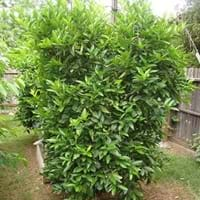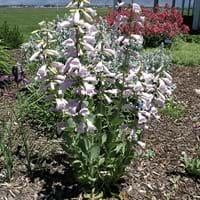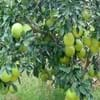Life Span
Perennial
Perennial
Type
Fruit
Flowering Plants
Origin
Southeastern Asia
North-Central United States, Central United States, Western United States, Texas
Types
not available
Not Available
Number of Varieties
Not Available
Habitat
Temperate Regions
Cultivated Beds, Sandy areas, Sunny Edge
USDA Hardiness Zone
10-11
3-9
Sunset Zone
H1, H2, 8, 9, 12, 13, 14, 15, 16, 17, 18, 19, 20, 21, 22, 23, 24
1a, 1b, 2a, 2b, 3a, 3b, 10
Habit
Oval or Rounded
Upright/Erect
Flower Color Modifier
Bicolor
Bicolor
Fruit Color
Green, Yellow green
Not Available
Leaf Color in Spring
Green, Light Green
Light Green, Gray Green
Leaf Color in Summer
Green, Light Green
Gray Green
Leaf Color in Fall
Green, Light Green
Gray Green
Leaf Color in Winter
Light Green
Not Available
Leaf Shape
Ovate
Oval to egg shaped
Plant Season
Spring, Summer, Fall, Winter
Summer
Sunlight
Full Sun, Partial Sun
Full Sun, Partial Sun
Type of Soil
Loam
Clay, Loam
The pH of Soil
Acidic, Neutral
Neutral, Alkaline
Soil Drainage
Well drained
Well drained
Bloom Time
Indeterminate
Late Spring, Early Summer, Summer
Tolerances
Drought
Drought
Where to Plant?
Container, Ground, Pot
Container, Ground, Pot
How to Plant?
Seedlings, Transplanting
Cuttings, Divison, Seedlings
Plant Maintenance
Medium
Medium
Watering Requirements
Do Not over Water, Requires regular watering
Keep the Soil well drained, Needs a lot of moisture in the growing season, Reduce watering in winter
In Summer
Lots of watering
Lots of watering
In Spring
Moderate
Moderate
In Winter
Average Water
Average Water
Soil pH
Acidic, Neutral
Neutral, Alkaline
Soil Type
Loam
Clay, Loam
Soil Drainage Capacity
Well drained
Well drained
Sun Exposure
Full Sun, Partial Sun
Full Sun, Partial Sun
Pruning
Prune in summer, Remove damaged leaves
Remove damaged leaves, Remove dead branches, Remove dead leaves
Fertilizers
All-Purpose Liquid Fertilizer
All-Purpose Liquid Fertilizer
Pests and Diseases
Aphids, Mites, White outside
Red blotch
Plant Tolerance
Drought
Drought
Flowers
Insignificant
Showy
Flower Petal Number
Single
Single
Foliage Texture
Medium
Medium
Foliage Sheen
Glossy
Matte
Attracts
Birds, Butterflies
Birds, Bumblebees
Allergy
Dental erosion
no allergic reactions
Aesthetic Uses
Not Used For Aesthetic Purpose
Showy Purposes
Beauty Benefits
Not Available
Not Available
Environmental Uses
Air purification
Air purification
Medicinal Uses
Not Available
Analgesic, Febrifuge, Stomachic
Part of Plant Used
Fruits
Root
Other Uses
Used As Food, Used in making beverages
Chewing
Used As Indoor Plant
Yes
No
Used As Outdoor Plant
Yes
Yes
Garden Design
Container, Edible, Fruit / Fruit Tree, Topiary / Bonsai / Espalier, Tropical
Rock Garden / Wall, Wildflower
Botanical Name
CITRUS aurantiifolia 'Bearss'
PENSTEMON grandiflorus 'Prairie Snow'
Common Name
Bearss Lime, Shiraz Limoo, Tahiti Lime
Large Beardtongue, Prairie Snow Beardtongue
In Hindi
Shiraz Limoo
Large Beardtongue
In German
Bearss Kalk
Large Beardtongue
In French
Bearss chaux
Large Beardtongue
In Spanish
Bearss cal
Large Beardtongue
In Greek
BEARSS ασβέστη
Large Beardtongue
In Portuguese
Bearss cal
Large Beardtongue
In Polish
bearss wapna
Large Beardtongue
In Latin
bearss lime
Large Beardtongue
Phylum
Not Available
Magnoliophyta
Class
Not Available
Magnoliopsida
Order
Sapindales
Scrophulariales
Family
Rutaceae
Scrophulariaceae
Clade
Angiosperms, Eudicots, Rosids
Angiosperms, Asterids, Eudicots
Tribe
Not Available
Not Available
Subfamily
Not Available
Not Available
Number of Species
Not Available
Properties of Bearss Lime and Large Beardtongue
Wondering what are the properties of Bearss Lime and Large Beardtongue? We provide you with everything About Bearss Lime and Large Beardtongue. Bearss Lime has thorns and Large Beardtongue doesn't have thorns. Also Bearss Lime does not have fragrant flowers. Bearss Lime has allergic reactions like Dental erosion and Large Beardtongue has allergic reactions like Dental erosion. Compare all the properties and characteristics of these two plants. Find out which of these plant can be used as indoor plant. If you are interested to decorate your house and garden, find out aesthetic uses, compare them and select the plant which will beautify your surrounding. Along with beautification, try comparing medicinal and edible uses of Bearss Lime and Large Beardtongue and you can choose the plant having best and most benefits.
Season and Care of Bearss Lime and Large Beardtongue
Season and care of Bearss Lime and Large Beardtongue is important to know. While considering everything about Bearss Lime and Large Beardtongue Care, growing season is an essential factor. Bearss Lime season is Spring, Summer, Fall and Winter and Large Beardtongue season is Spring, Summer, Fall and Winter. The type of soil for Bearss Lime is Loam and for Large Beardtongue is Clay, Loam while the PH of soil for Bearss Lime is Acidic, Neutral and for Large Beardtongue is Neutral, Alkaline.
Bearss Lime and Large Beardtongue Physical Information
Bearss Lime and Large Beardtongue physical information is very important for comparison. Bearss Lime height is 460.00 cm and width 370.00 cm whereas Large Beardtongue height is 50.80 cm and width 35.60 cm. The color specification of Bearss Lime and Large Beardtongue are as follows:
Bearss Lime flower color: White
Bearss Lime leaf color: Green and Light Green
Large Beardtongue flower color: White
- Large Beardtongue leaf color: Light Green and Gray Green
Care of Bearss Lime and Large Beardtongue
Care of Bearss Lime and Large Beardtongue include pruning, fertilizers, watering etc. Bearss Lime pruning is done Prune in summer and Remove damaged leaves and Large Beardtongue pruning is done Remove damaged leaves, Remove dead branches and Remove dead leaves. In summer Bearss Lime needs Lots of watering and in winter, it needs Average Water. Whereas, in summer Large Beardtongue needs Lots of watering and in winter, it needs Average Water.





